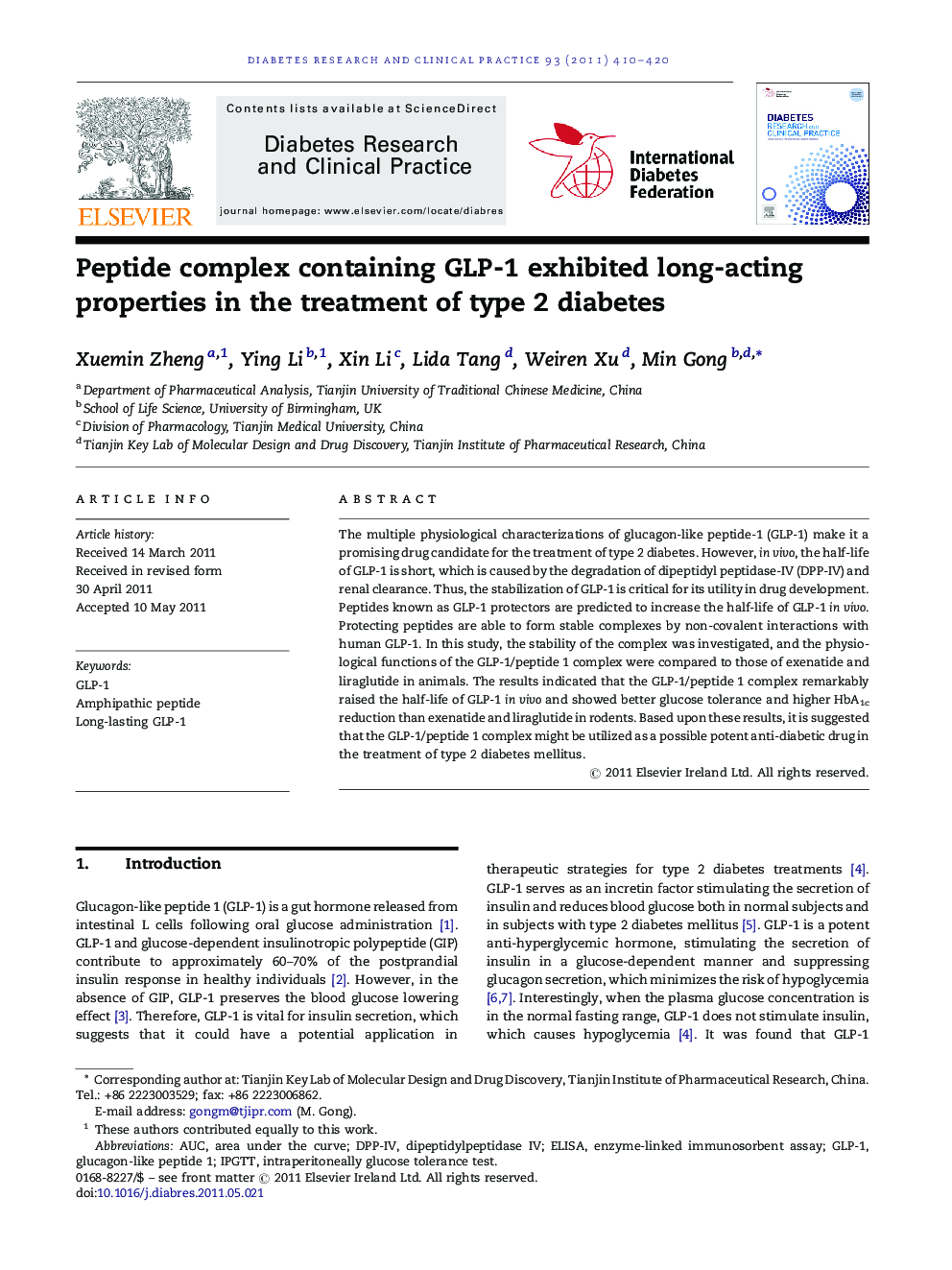| Article ID | Journal | Published Year | Pages | File Type |
|---|---|---|---|---|
| 5900534 | Diabetes Research and Clinical Practice | 2011 | 11 Pages |
The multiple physiological characterizations of glucagon-like peptide-1 (GLP-1) make it a promising drug candidate for the treatment of type 2 diabetes. However, in vivo, the half-life of GLP-1 is short, which is caused by the degradation of dipeptidyl peptidase-IV (DPP-IV) and renal clearance. Thus, the stabilization of GLP-1 is critical for its utility in drug development. Peptides known as GLP-1 protectors are predicted to increase the half-life of GLP-1 in vivo. Protecting peptides are able to form stable complexes by non-covalent interactions with human GLP-1. In this study, the stability of the complex was investigated, and the physiological functions of the GLP-1/peptide 1 complex were compared to those of exenatide and liraglutide in animals. The results indicated that the GLP-1/peptide 1 complex remarkably raised the half-life of GLP-1 in vivo and showed better glucose tolerance and higher HbA1c reduction than exenatide and liraglutide in rodents. Based upon these results, it is suggested that the GLP-1/peptide 1 complex might be utilized as a possible potent anti-diabetic drug in the treatment of type 2 diabetes mellitus.
